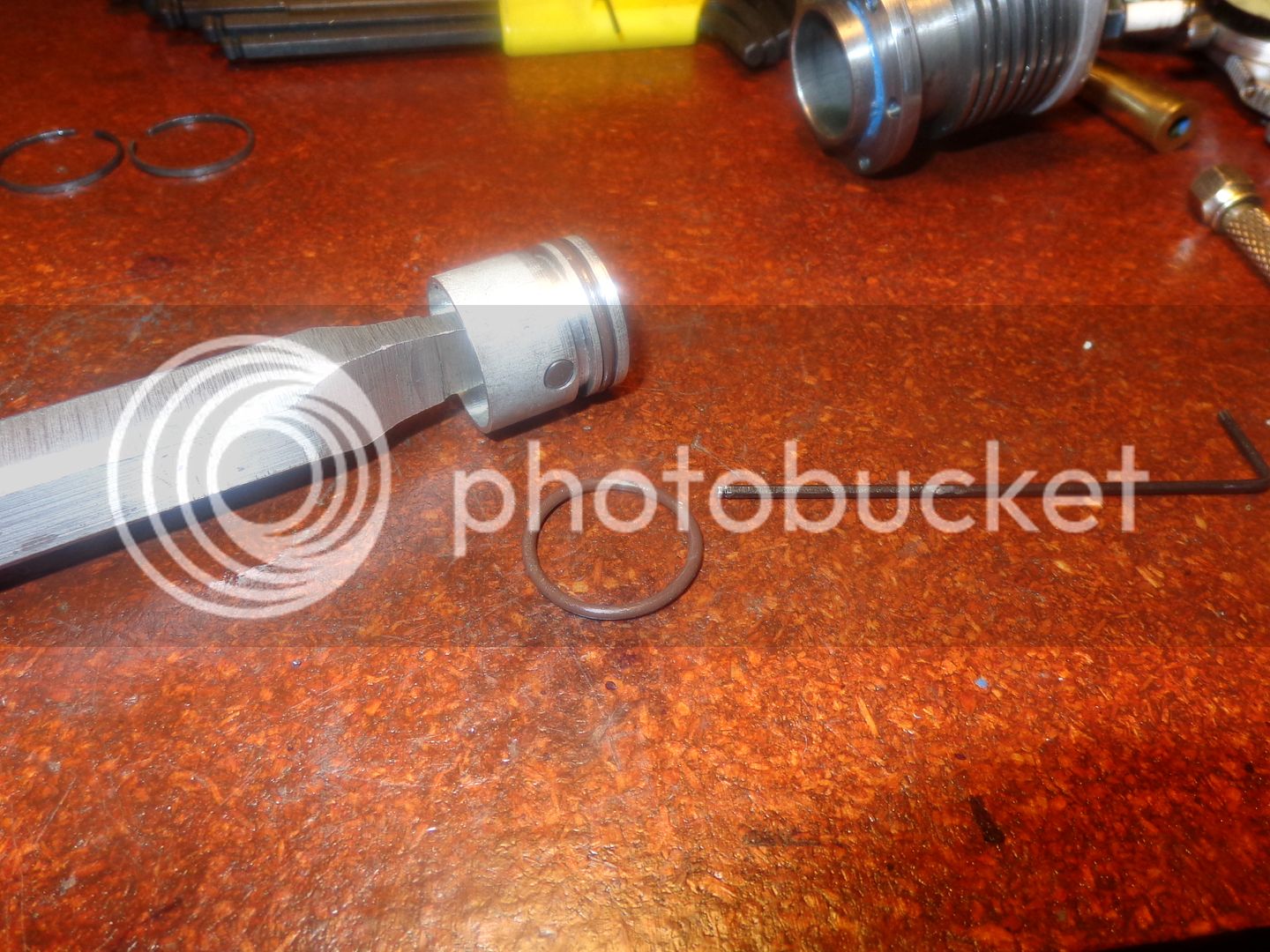What is your ring end gap when the ring is squarely in the bore? Also are you staggering the gaps?
Ray
Ray

Working ring gap is 0.003". Ring gaps are set opposite to each other.What is your ring end gap when the ring is squarely in the bore? Also are you staggering the gaps?
Ray

Well--For the moment, I am snookered. I hooked everything up on the engine and cranked it numerous times with my variable speed electric drill, but other than a couple of smoke rings, it was a no run situation. I checked my valve lash and the lash is okay--the valves are closing completely. I even got my can of ether "Quick Start" out, and gave the carb a shot while cranking the engine over, but no joy. I have lots of spark, and its coming at the correct time. The valve timing sequence is correct. I just pulled the cylinder off and the rings LOOK okay, but there was very very little compression, and the heavy oil down the sparkplug hole didn't make any difference to the compression when turning the engine over by hand. Once again, I held my lips over the open end of the cylinder and blew until I thought I might pass out, and there is absolutely no leaks at the valves unless I depress them by hand. The ring grooves in the piston are actually deeper than they should have been, but I don't think that would prevent the rings from sealing at any rate. The grooves are however, just about the perfect depth for a Viton o-ring, although they are a bit too narrow. Right now I am approaching burn out on this engine. I think perhaps I will pull the piston out and widen the grooves enough to accept a Viton 1/16" cross section o-ring, and see what happens to the compression with a pair of Viton rings.
That's all folks!!!--for today anyways. If I do any more today, I'm going to be too stoked to sleep tonight. (If I'm not already.) I have progressed to the point of short duration runs, but none long enough to make me run for the video camera. I am down to that very fine balancing point between fuel mixture and ignition timing. The Chuck Fellows carburetor that I built has an extremely small range between too much gas and no gas at all. It doesn't have a sewing needle for the main (only) mixture control, but instead has a home made needle with a long taper made on my lathe. I may have to switch it out for one of my store bought model airplane carbs until I get good sustained runs. (They have a much wider range of mixture, because of their construction.) Thanks for watching and commenting today.---Brian
.....I made a fixture to heat treat the, and made the diameter of the fixture where the rings fit onto 1 mm or 0.040" larger than the inside diameter of the rings. ....... I found that when the rings are stretched over the fixture, the gap becomes about 0.100".....
What to do---what to do----I am at that juncture I always seem to arrive at when trying to get one of these engines to run on it's own. I put the model airplane carburetor on. Results are about the same as with the Chuck Fellows carburetor. This probably means that it wasn't the fault of the Chuck Fellows carburetor after all. Engine will start and run along with drill if I choke it by putting my finger briefly over the air intake.-Trouble is, it will only run until this extra rich charge of fuel is burned, then it quits firing. At this point, logic would dictate that I should open the needle valve just a touch more to give the extra fuel, and the engine should keep running---only it doesn't. It floods. I think I actually had better sustained firing with Chuck's carburetor. If we take compression out of the equation, there are only three things involved.--Carburetor setting, ignition timing, or valve timing. I hate to think it would be valve timing, because that involves taking the points and ignition cam and fancy brass gear cover off to change it. I have tried two different carburetors that performed flawlessly on my other i.c. engines. --Maybe that knocks it down to only two variables, ignition and valve timing. Maybe I will pull the remaining hair out of my head---or maybe----
Enter your email address to join: